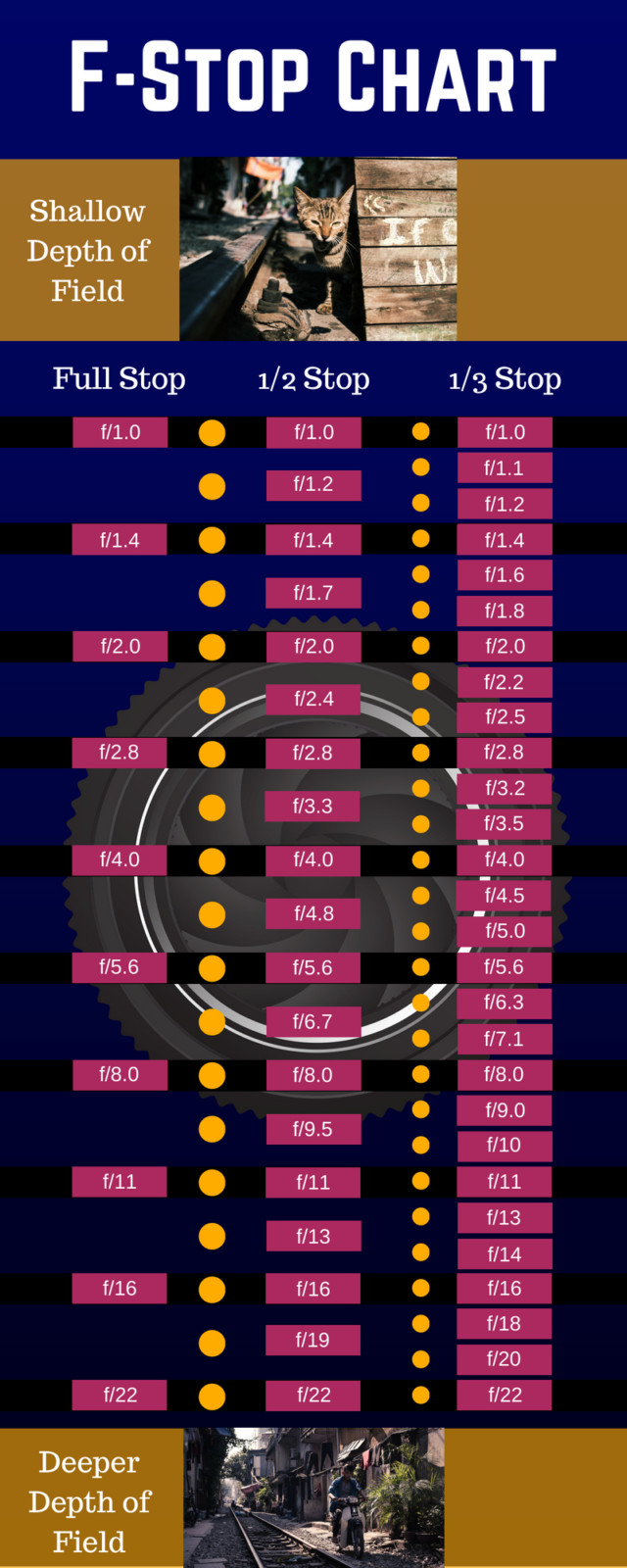

Shallow depth of field indicates that only part of a scene is in sharp focus. When subjects both near and far are relatively crisp and sharp, many photographers say a scene has deep depth of field. Depth of field is another photography concept that's easy to cloud with complicated mathematics and esoteric language, but, basically, it refers to how much of a scene is in focus. Keep reading to find out how aperture control affects the way your pictures look.Īs you tweak your camera's aperture, you're altering the lens' depth of field.
#F stop range how to
What you really need to know is how to adjust the aperture diameter to your advantage as you shoot.

If you use an SLR (single-lens reflex) camera that lets you affix a range of lenses, the f-stop numbers will be different for each lens.Īll technical details aside, you won't need to spend a lot of time sweating the finer points of f-stops. So, moving from f/10 to f/20 decreases the size of the aperture from 10mm to 5mm.

Keep in mind that doubling the f-stop number halves the size of the aperture opening. Focal length is often printed right on the camera lens.Ī lens with a 100mm focal length set to an f-stop of f/10 has an aperture diameter of 10mm. Focal length refers to a lens' field of view (sometimes called angle of view), which is the width and height of the area that a particular lens can capture. The f-stop number is determined by the focal length of the lens divided by the diameter of the aperture. The same goes for your camera's aperture in most situations. In general, the brighter the scene, the more the pupil constricts in low light, the pupil is larger, letting in as much light as possible. This aperture can change in size, and it works a lot like the pupil in your eye. Happily, figuring out f-stops is really pretty simple once you disassemble the term and break it up into understandable parts.įor starters, your camera has a mechanical aperture that controls how much light enters the camera. F-stops especially seem to baffle many novice shooters, perhaps because of the weird alphanumeric symbols used to indicate these settings.
#F stop range iso
When you take pictures, you're using the interplay between shutter speed, ISO and f-stop settings to control exposure. For more information on these subjects, check out our articles " What is ISO speed?" and " 10 Important Photography Terms." S hutter speed and ISO settings are also important concepts that will help you flesh out your understanding of how cameras work.


 0 kommentar(er)
0 kommentar(er)
